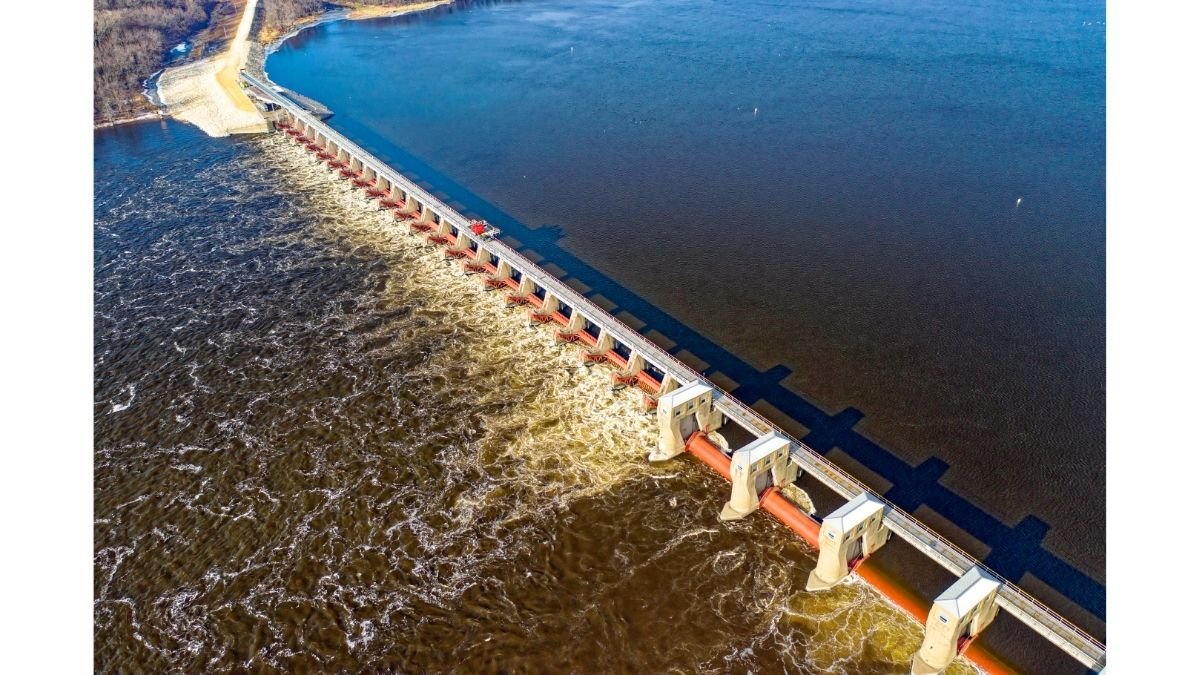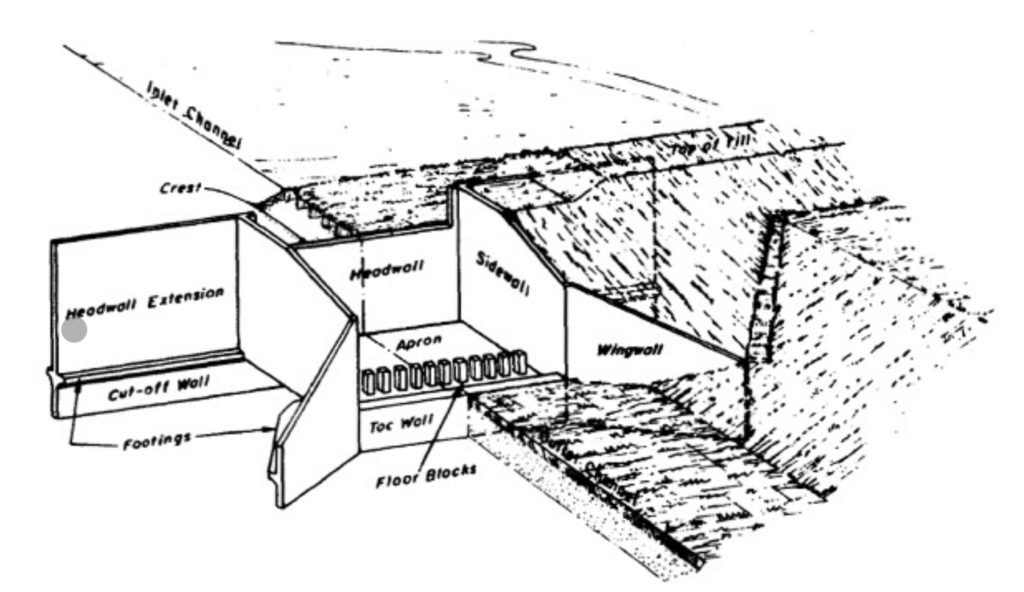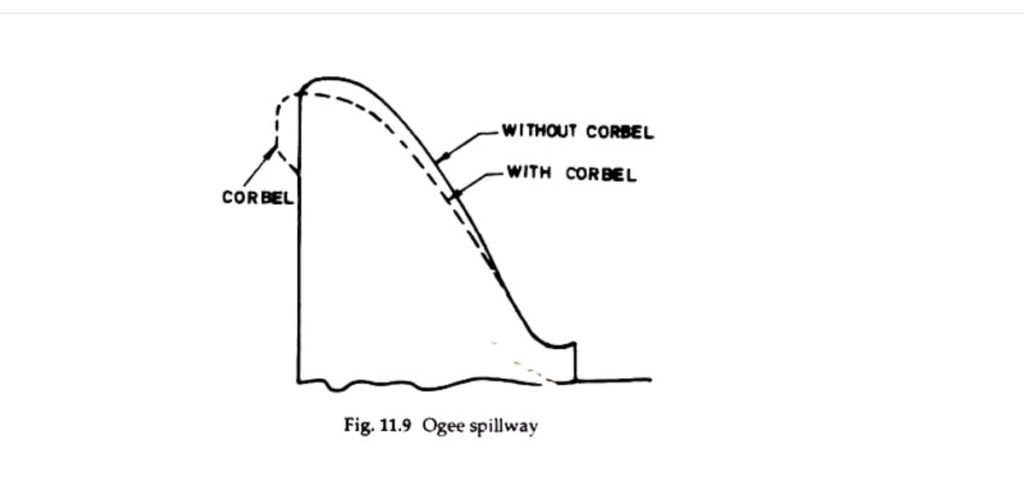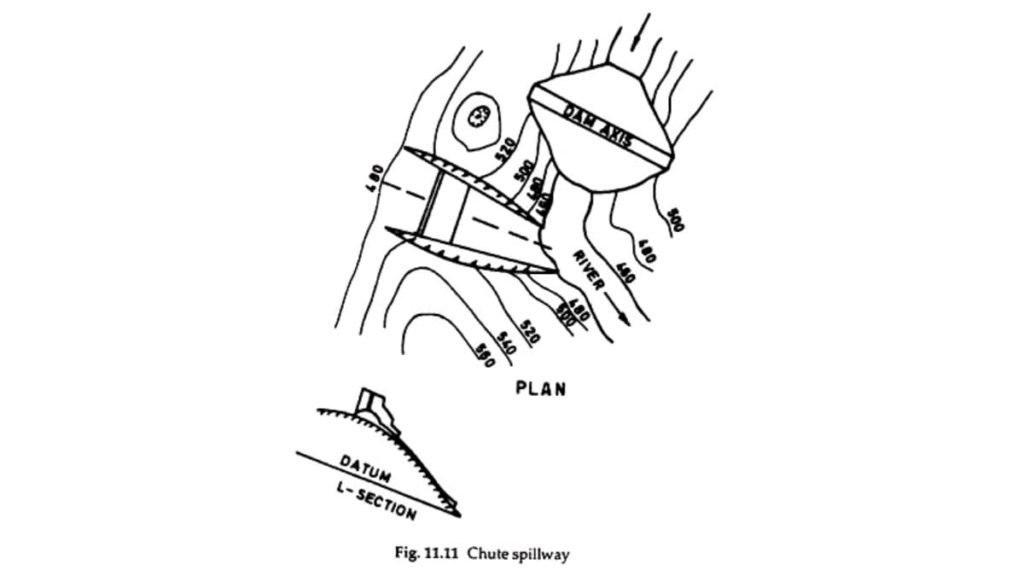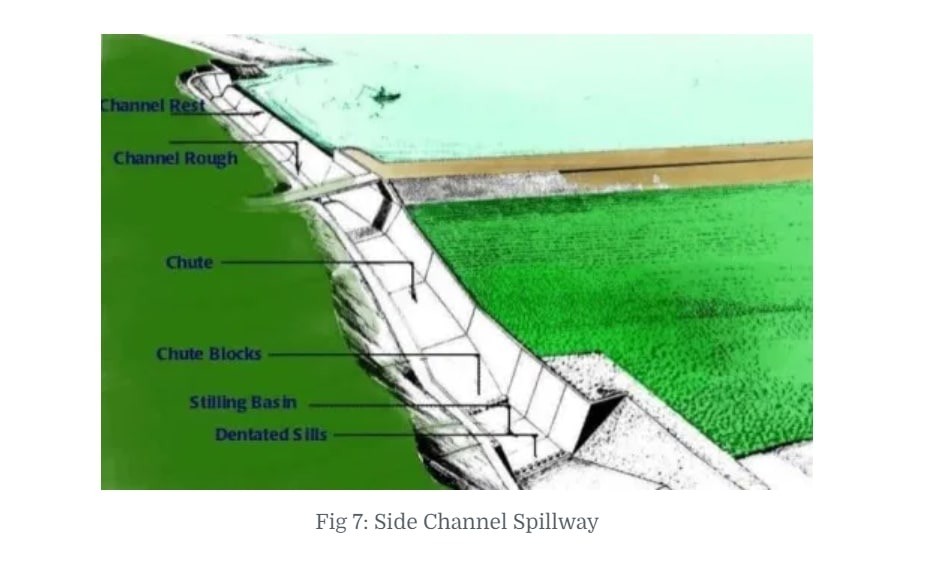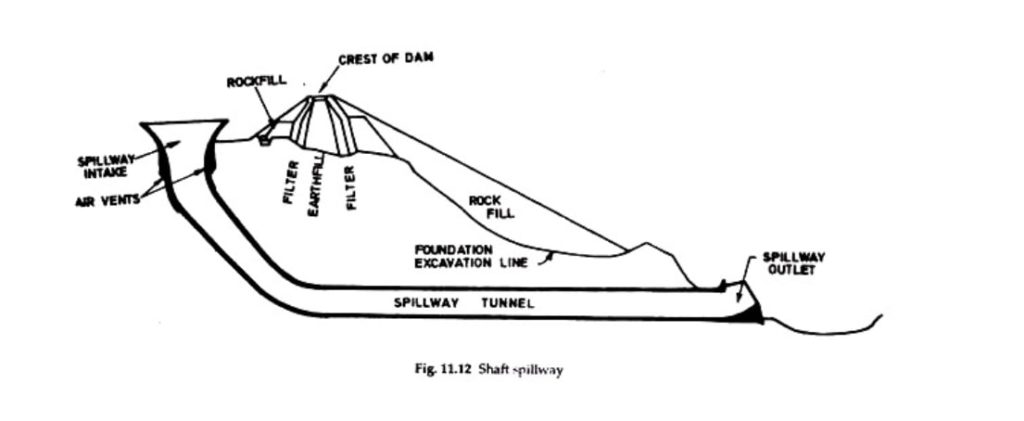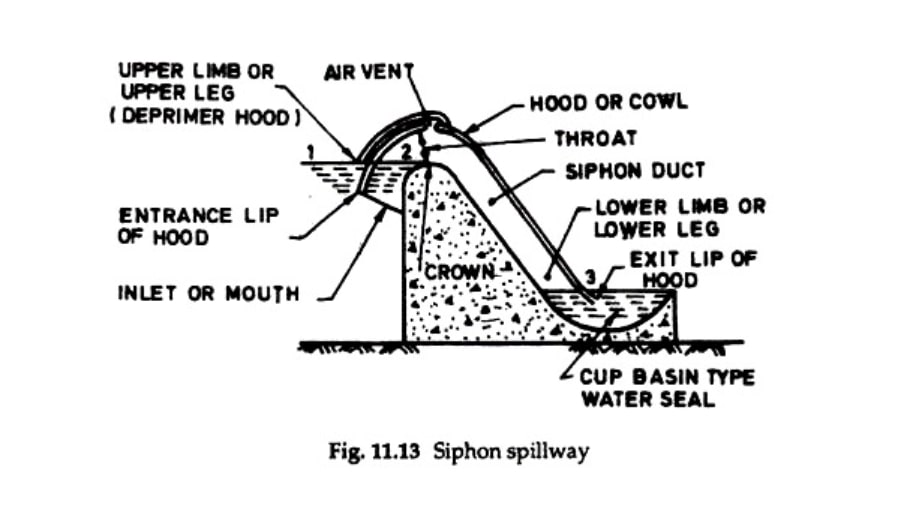A spillway is an inevitable component of any dam that helps in the emergency discharge of water. Spillways is an important topic in hydraulics. Design of dam and related information comes under the topic. In this blog, I will show you the importance of spillway and their types. We will go deeper into each of these in separate sections.
Let’s start from the definition.
What is a Spillway?
A spillway is a structure that allows water from a dam or levee to be released in a regulated manner downstream, usually into the riverbed of the dammed river. Before going into their classification, let’s first understand why dams require a spillway.
Spillways are important because,
- Any reservoir has a certain amount of water storage space.
- If the reservoir is full and flood water enters, the reservoir level will rise, potentially causing the dam to overflow.
- To stop this, the flood must be carried on downstream.
- This is accomplished by providing a spillway that draws water from the reservoir’s roof.
- A spillway may be built into or separate from the dam.
Also read: Dams – Importance, Site selection, Advantages and Disadvantages
Let’s go on a trip to see the different types of spillway.
Also read: Types of Dams – 3 Classification Criteria Explained
Spillway Types
Depending on the suitability of the site and other conditions, various types of spillways may be given. A spillway is made up of three parts:
- Control structure – It is the spillway’s most critical feature. The control system is designed to prevent outflow from the reservoir when the water level falls below a predetermined level. But also allows outflow if the water level rises above that level.
- Conveyance channel – Dam spillways that use open-channel flow rules to transport impounded water are known as open channel spillways. They can serve as principal spillways, emergency spillways, or both. They can be found on the dam itself or on a natural incline in the dam’s vicinity.
- Terminal structure – Static energy is converted to kinetic energy as water flows from the reservoir over the spillway. As a result, the flow rate at the downstream end of the spillway is extremely high. It causes damage to the dam, spillway, and other nearby structures. As a result, before the flow is returned to the river downstream, the high energy of the flow must be dissipated. To dissipate the excess energy, terminal structures are given at the discharge channel’s downstream end.
The first two can be combined in some cases. Now we have seen the main parts of a spillway. Time to learn about the different categories. The following are some of the most popular types:
- Drop Spillway
- Ogee Spillway
- Chute Spillway
- Side-Channel Spillway
- Shaft Spillway
- Siphon Spillway
- Conduit Spillway
- Culvert Spillway
Let’s discuss each of its features in detail.
Drop Spillway – Spillway types
This is a weir structure and the flow passes through the weir opening, then drops to a level apron or stilling basin before entering the downstream channel.
- The overflowing water falls freely and almost vertically on the downstream side of the hydraulic system.
- Ideal for low dams or weirs.
- The crest of the spillway has a nose to prevent the water jet from striking the structure’s downstream foundation.
- On the downstream side, a horizontal impervious apron should be provided to protect the structure from the impact of scouring.
- A basin is often built on the downstream side to create a small artificial pool known as a water cushion.
- The aim of this cushion is to dissipate the energy of falling water.
Ogee type Spillway
- This is an overflow spillway with a controlled weir and a profile that is ogee-shaped (S-shaped).
- It’s designed to track the lower surface of a horizontal jet that emerges from a sharp-crested weir.
- At the design head, the pressure at the ogee crest remains atmospheric.
- At a lower head, the pressure on the ogee crest becomes positive.
- This results in the backwater effect which decreases the discharge.
- At a higher head, the pressure on the crest becomes negative, resulting in the backwater effect, which increases the discharge.
Chute Spillway – Spillway types
The chute spillway is an open channel-like structure with a fitting inlet and outlet built on the steep slope of the gully face.
- Also called Trough Spillway.
- The aim of the Chute Spillway is to protect the valley walls from damage that could put the dams in danger.
- It is made up of a reinforced concrete slab that is a steeply sloping open channel.
- The spillway is not always of the same width.
- It is normally narrowed for the economy and then widened at the end to reduce the discharging velocity.
Side-channel spillway – Spillway types
A side channel spillway has a control weir that runs alongside and roughly parallel to the spillway discharge channel’s upper half.
- Unlike a chute spillway, the water spilling from the crest is turned 90 degrees and flows parallel to the crest of a side-channel spillway.
- When flanks of adequate width are not accessible, side-channel spillways are preferred over chute spillways, typically to prevent heavy cutting.
- The angle of turn of the water flow after passing through the weir crest can be held between 0 and 90 degrees. The spillway discharge falls into a shallow trough after flowing over the weir crest.
Shaft Spillway
- The water from the reservoir enters a vertical shaft in the shaft spillway, which transports the water into a horizontal tube.
- A Shaft Spillway is made up of a horizontal crest and a vertical shaft, with the top surface at the spillway’s crest level and the lower end attached to a vertical shaft.
- The vertical shaft’s other end is attached to a horizontal conduit or tunnel that runs through or around the dam and transports the water to the river below.
- When the conditions aren’t conducive to an overflow or a chute spillway, a shaft spillway is used.
Siphon Spillway
- The theory of siphonic action governs the operation of a Siphon spillway.
- A syphon spillway is made up of two syphon pipes.
- One of them is held upstream and in contact with the reservoir, and the other spills water on the downstream side.
- An airtight RCC cover, known as the hood, is placed over an oggy-shaped concrete body wall to form the syphon duct.
- The crest of the spillway is formed by the top of the body wall, which is held at the reservoir’s F.R.L.
Conduit Spillway
- Made up of a closed conduit that transports floodwaters to a downstream channel.
- A vertical or inclined shaft, a horizontal tube, or a conduit built in an open cut and then covered are all examples of closed conduits.
- It is built in the abutment or underneath the dam.
- Dam sites in narrow canyons with steep abutments would benefit from such a spillway.
Labyrinth Spillway
- A labyrinth spillway is one in which the weir wall is built in a zigzag pattern to maximise the effective length of the weir crest in comparison to the channel width.
- This improvement in effective length increases the weir’s discharge capacity, allowing for more water flow at small heads to be easily transported downstream.
That’s it about spillway and their types. Hope you found it insightful. Next time you visit a dam site, make sure that you are able to identify the type of spillway present there. If you get confused don’t forget to check out our detailed articles on dams.

